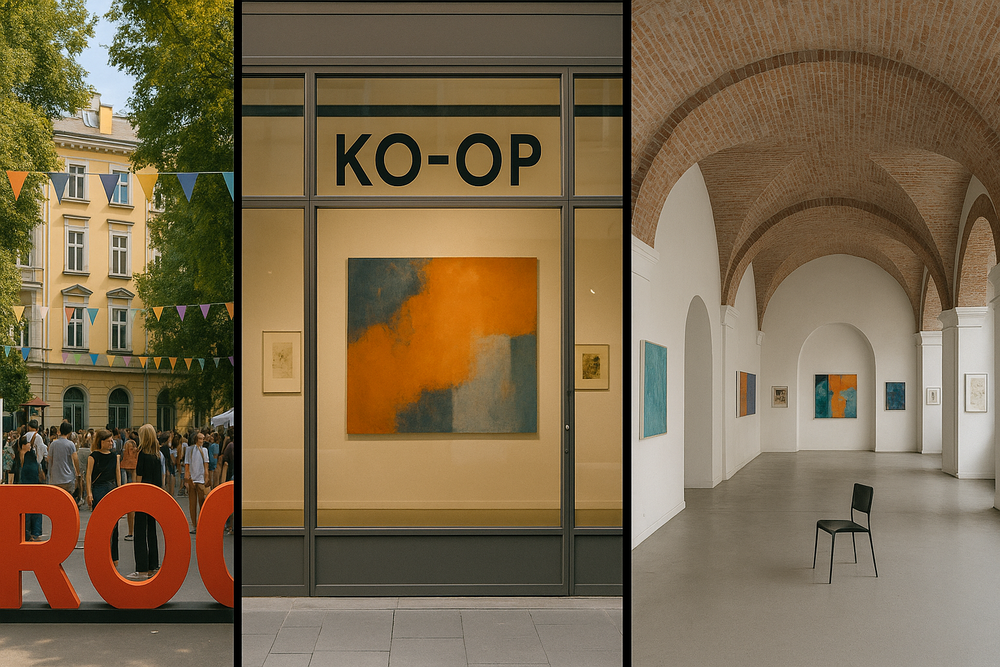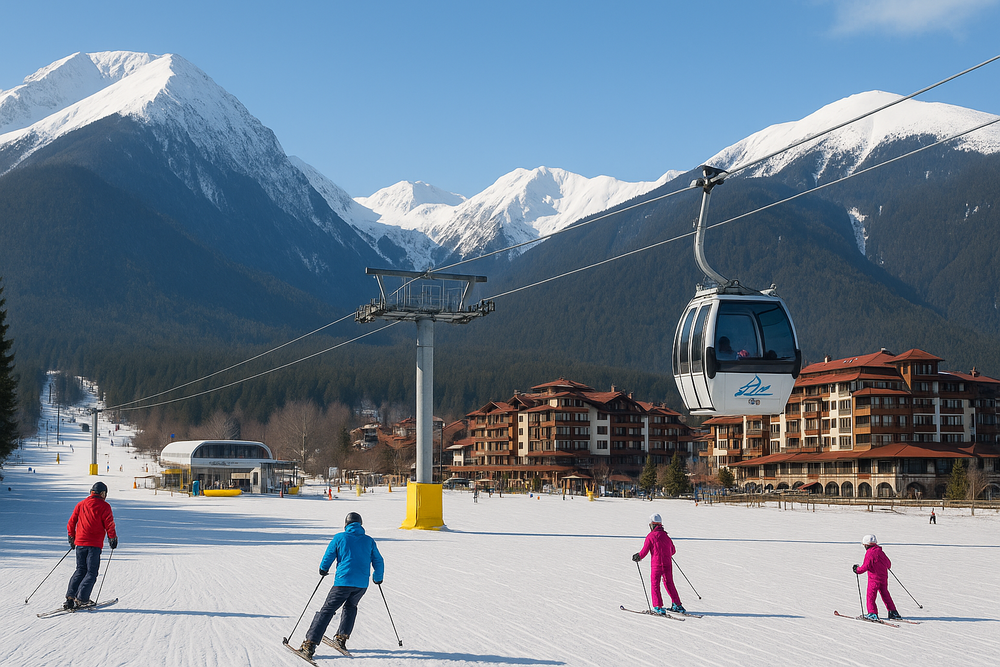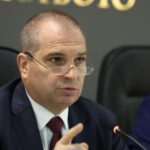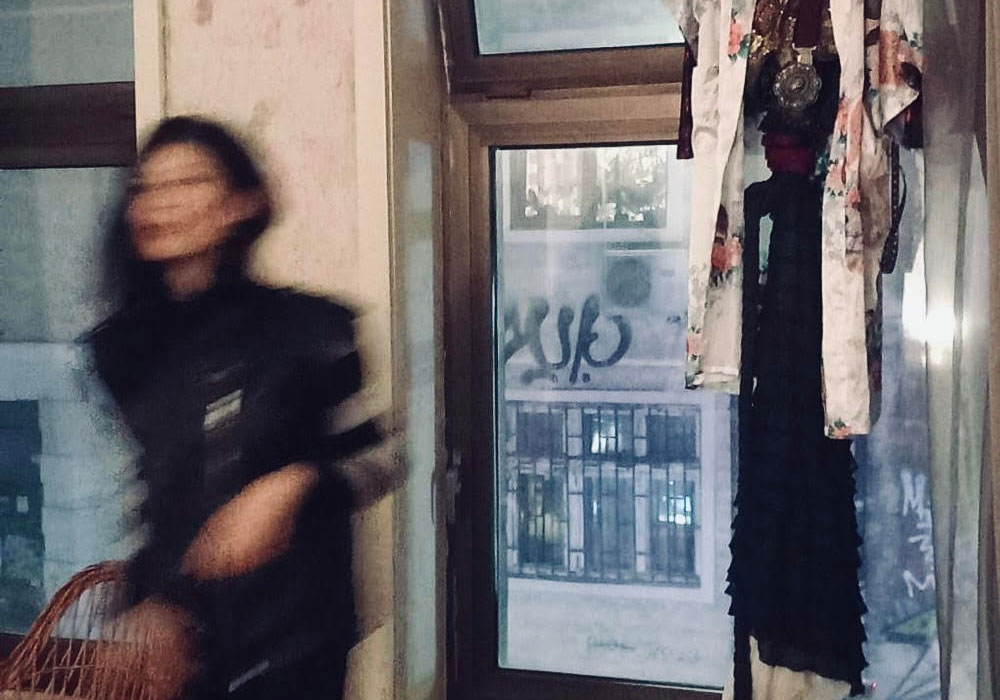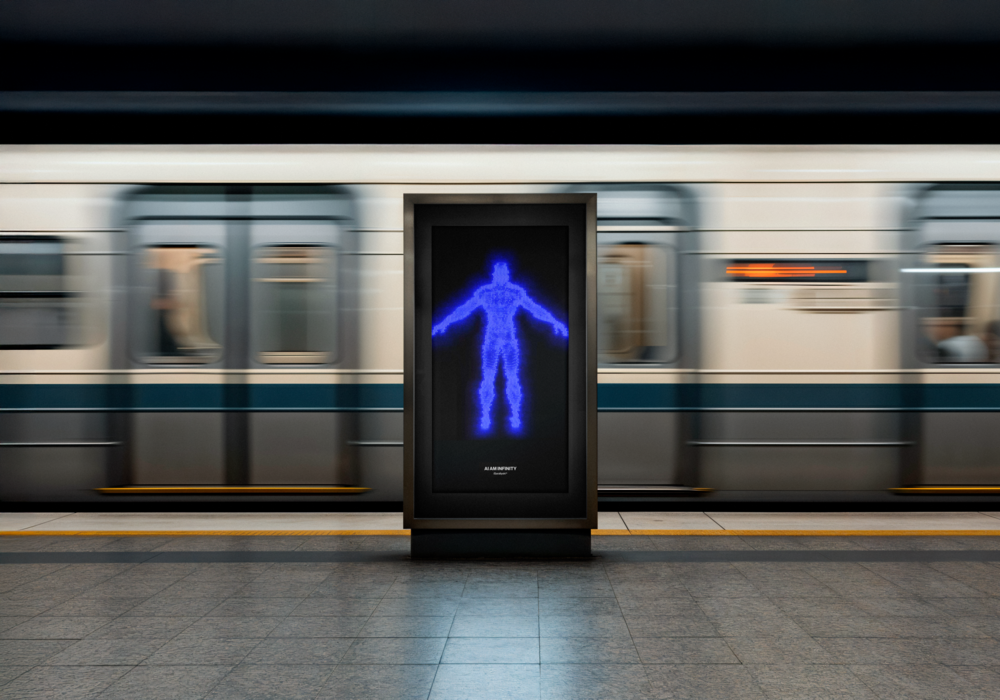
Your recent installation, “AI AM INFINITY”, explores the fusion between human intuition and artificial intelligence. What inspired you to embark on this conceptual journey?
It began as a question rather than a statement – what happens when a human sensibility meets a generative, non-human system in a continuous loop? I was curious not only about the aesthetics that could emerge, but about authorship itself. AI AM INFINITY allowed me to step into a shared space – where intuition guides the logic, and the algorithm echoes back something unexpected. The project was also a way to visualise transformation without a clear origin or destination – something perpetual, fluid, and reflective.
In what ways do you think AI can expand or even challenge the boundaries of traditional artistic expression?
AI doesn’t replace traditional expression – it reframes it. It brings unpredictability, multiplicity, and speed, but also raises essential questions: What is the role of the artist? Who – or what – generates meaning? For me, AI is less a tool and more a collaborator with its logic. It challenges linearity, authorship, and even the idea of a final “work.” That opens both creative and critical space for new kinds of practice.
How do you personally balance your role as a creator and researcher when developing such multidimensional projects?
I don’t separate them. Creation and research flow into each other. My academic work informs my studio practice, and vice versa. In a project like AI AM INFINITY, theoretical questions about perception, symbolism, and systems directly shape the technical and visual structure of the piece. I see research as a creative act – one that allows for reflection, layering, and deeper context.
Your academic work focuses on the symbolism and evolution of Tarot cards. How do you see the relationship between these ancient symbolic systems and the themes explored in your digital art?
Both Tarot and digital systems are built on structures of coded meaning. Tarot cards condense centuries of myth, archetype, and symbolism into a visual system designed for interpretation. AI, in its way, also decodes and recodes meaning – albeit through data and probability. What interests me is how both systems operate in ambiguity. In my work, I often explore how ancient symbolic languages can be re-encoded into contemporary digital aesthetics – bridging the esoteric with the algorithmic.
Bulgaria has a rich visual and symbolic heritage. Has Bulgarian cultural identity influenced your artistic language or conceptual approach in any specific way?
Absolutely, though not always in overt references. Bulgarian iconography, ritual structure, and even linguistic rhythm have shaped how I think about image, repetition, and presence. There’s a certain mystical sensibility embedded in our cultural DNA – a symbolic density – that resonates with my interest in layered, interpretive systems like Tarot or generative visual languages.
As a lecturer at New Bulgarian University, how do you see the current generation of young Bulgarian artists shaping the contemporary art scene?
They are critical, experimental, and increasingly interdisciplinary. What I admire most is their fluency across media – many of them are equally comfortable with code and clay, video and performance. They’re asking difficult questions, engaging with social and technological shifts, and doing so with a clear sense of local context. I believe they’re contributing to a new wave of Bulgarian art that is both grounded and globally resonant.
Are there any galleries, festivals, or initiatives in Bulgaria today that you believe are making a meaningful contribution to the development of contemporary visual arts?
Yes – spaces like KO-OP, Doza gallery, Structura, and Intro gallery, among others, are vital in supporting emerging voices and experimental practices. On the festival side, DA Fest, Water Tower Art Fest, and Radar in Varna are doing important work in bridging art, technology, and sound. These initiatives create much-needed platforms for dialogue and visibility, not only for Bulgarian artists but for regional and international exchange.
Could you share a recent exhibition or collaboration in Bulgaria that you found particularly exciting or groundbreaking?
One of the most meaningful and thought-provoking exhibitions I’ve taken part in recently was A/POLITICAL, a curatorial project by Gergana Minkova. The exhibition responded to the escalating social and political tensions both globally and locally. Rather than turning away from these issues, it confronted them directly – not as documentation, but as a collective artistic reflection on the absence of a local perspective in a world increasingly shaped by global conflicts and ideological rifts. My contribution was DIS/VOICED – an LED text installation that explores the condition of muted speech, of presence without voice, and of messages stripped of sound. The work does not offer resolution; instead, it demands attention: to those whose voices have not disappeared, but have been ignored, dismissed, or internally silenced. With this piece, I sought to express not silence, but dis/voicing – a state of enforced absence. The text becomes light, cold, unyielding, and unmissable. It does not echo – it illuminates. For me, this was a deeply necessary gesture – both artistically and civically.
How do you see the role of technology in the Bulgarian art context – are local institutions and audiences open to digital or experimental art forms?
It’s evolving. There’s growing interest and curiosity, but still a gap in infrastructure and institutional support for digital and time-based media. That said, many artists are self-organising, learning, and producing with great autonomy. The audience is there – it’s young, engaged, and responsive. I think the next step is for institutions to catch up and invest more in experimental platforms, residencies, and production spaces.
Looking ahead, what future themes or directions are you interested in exploring – either through AI-based works or through your research in symbolic visual culture?
I’m interested in non-linear narrative structures, and how symbolism can function within generative environments – not as decoration, but as active logic. I’m also thinking a lot about digital rituals and how contemporary interfaces affect our sense of time, memory, and identity. Whether through AI, video, or print, I’ll likely continue exploring how the ancient and the emerging can co-inhabit the same visual field – tangibly and symbolically.

